Mastering Concealer Application Techniques
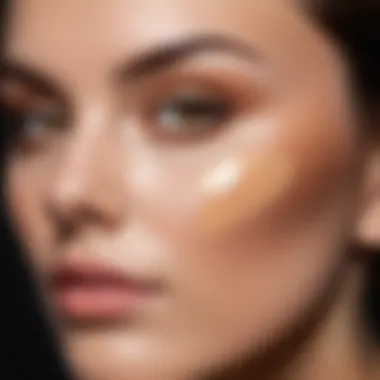
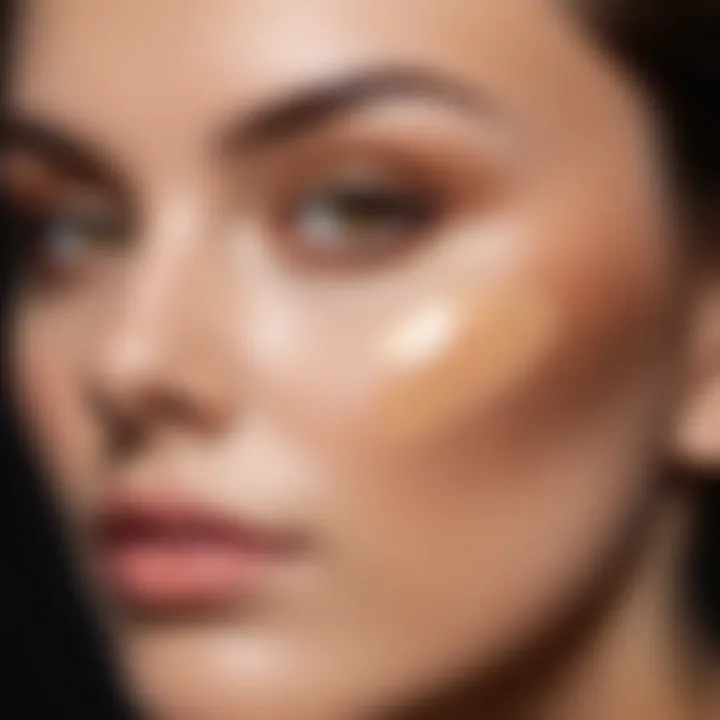
Intro
Mastering the techniques for applying concealer is essential in the quest for a flawless complexion. Whether you're aiming to cover up dark circles under the eyes or camouflage pesky blemishes, the right approach can make all the difference. This comprehensive guide will equip you with practical tips and techniques that cater to various skin types and tones, ensuring that everyone, from makeup novices to seasoned enthusiasts, can achieve that coveted look.
Through detailed visual demonstrations and step-by-step instructions, you'll learn how to enhance your makeup application skills. We delve into the foundational principles behind concealer’s use, making it a valuable resource for those looking to refine their techniques. So buckle up and get ready to explore the fascinating world of concealer application that enhances your natural beauty.
Ürün İncelemesi
It’s important to choose the right concealer that complements your skin's needs. Not all products are created equal, and understanding the unique qualities of a concealer can lead you to make a more informed decision.
Ürün Tanıtımı
Concealers come in various forms, including liquid, cream, and stick. They are formulated to address different concerns, from uneven skin tone to redness and hyperpigmentation. While some concealers offer full coverage, others may provide a lighter touch that allows your natural skin to shine through. It's essential to evaluate which type suits your needs best.
Ürün Özellikleri
When assessing a concealer, consider the following features:
- Texture: Creamy formulas may work wonders for dry skin types, while liquid concealers often suit oily skin.
- Coverage Level: Ranging from sheer to full coverage, select one based on what you need to conceal.
- Finish: Some concealers provide a matte finish, while others offer a more luminous look.
- Skin Type Compatibility: Remember, not all products are suitable for everyone. Look for those specifically formulated for your skin type, be it oily, dry, or combination.
Güzellik İpuçları
Achieving that flawless base is not just about the product but also about how you apply it. Here are some beauty tips that can transform your makeup routine.
Doğal Güzellik Yöntemleri
- Skin Prep: Start with a clean, moisturized face. A good primer can help create a smooth canvas for application.
- Application Tools: Consider using your fingers for a more natural blend or a brush for more precision.
- Layering Techniques: Do not apply too much in one go; build coverage gradually for a more natural effect.
- Set with Powder: Lightly dust translucent powder to keep concealer in place throughout the day.
Sağlıklı Beslenme ve Güzellik
Healthy skin starts from within. Here are some tips to keep your skin looking its best:
- Stay hydrated to maintain skin elasticity.
- Incorporate antioxidant-rich foods like berries and vegetables into your diet.
- Prioritize rest and stress management; both play a crucial role in your appearance.
Remember, a flawless finish comes from both the right products and techniques. Investing the time in understanding how to effectively apply concealer can transform your makeup game and boost confidence in your appearance.
Intro to Concealers
In the vast realm of makeup, concealers wield a unique power. They bridge gaps between natural imperfections and the flawless façade many seek to achieve. Concealer is not merely a cosmetic item; it's a tool that enhances confidence, helps individuals express their unique beauty, and empowers people to face the world with assurance. This section outlines what concealers are, their significance, and why understanding them is paramount.
Definition and Purpose
Concealers are specialized cosmetic products designed to cover up flaws, such as dark circles, blemishes, and other skin imperfections. The primary goal of a concealer is to provide a blank canvas, enabling one to apply other makeup products on top without the previous distractions of uneven skin tone or marks. This is an essential first step to achieving a polished look.
Types of Concealers
The variety of concealers available today is astounding. Understanding the different types can help individuals choose the right product for their specific needs; this decision influences the overall makeup application. Here are the four main types:
Liquid Concealers
Liquid concealers are a go-to for many, thanks to their versatility. Their consistency allows for easy blending and layering, making them ideal for a natural finish. People often appreciate their lightweight feel, which feels less caked on the skin. A key characteristic of liquid concealers is their medium to full coverage, which can effectively hide imperfections without looking heavy. However, one caveat is that they may dry quickly, requiring you to work fast during application. For those prone to oily skin or hot climates, liquid concealers can be a solid choice as they often come with matte finishes.
Stick Concealers
Stick concealers are known for their straightforward application. The solid format allows for a more precise approach, especially when targeting specific areas like blemishes or under-eye circles. Their thick consistency offers excellent coverage; however, this can sometimes lead to a heavier appearance, particularly on dry skin. Nevertheless, stick concealers remain popular due to their portability and ease of use. They often work well for spot concealing, making them an essential companion for on-the-go touch-ups.
Cream Concealers
Cream concealers often strike a balance between liquid and stick forms. They bring robust coverage that can effectively camouflage imperfections yet remain creamy enough for a blendable finish. Their unique feature lies in their ability to hydrate the skin during wear, making them an excellent choice for those with dehydrated or mature skin. This product does require a good setting powder, as they can crease or move under makeup through the day.
Pencil Concealers
Last but not least, pencil concealers are loved for their precision. This type of concealer allows for targeted application, making them perfect for blemishes or fine lines. They often come in twist-up forms, similar to lipstick, which adds convenience. While pencil concealers can occasionally lack the same coverage as their cream or liquid counterparts, they excel in specific situations. Their portability and ease of use make them a staple in many makeup bags.
"The right concealer can transform not just your appearance but how you feel about yourself. Choose wisely!"
In understanding the various types of concealers, one takes a significant step toward mastering the art of makeup application. Each type possesses distinct advantages and fits different scenarios, catering to varying skin types and personal preferences.
Ultimately, learning how to leverage these products shapes a foundation for stunning makeup looks.
Understanding Skin Tones and Undertones
In the realm of makeup, understanding skin tones and undertones is fundamental. It plays a crucial role when selecting the right concealer and can dramatically affect the overall look. Whether one aims to conceal blemishes, dark circles, or any other skin imperfections, recognizing your unique skin tone and its underlying undertones ensures a flawless application.

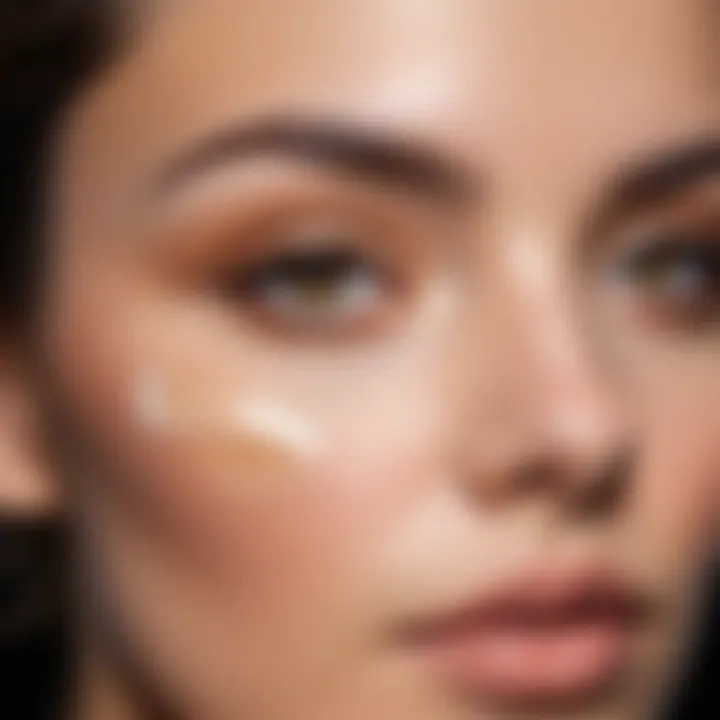
Choosing the right shade of concealer tailored to your skin tone harmonizes your makeup look, making imperfections less visible without that pronounced "mask" effect. Undertones, while often overlooked, are essential as they create the foundation upon which your makeup is applied. By knowing the subtle hues beneath the skin's surface, one can achieve a more seamless blend, allowing the concealer to sit beautifully on the skin.
Identifying Your Skin Tone
To identify your skin tone, first observe your skin in natural light. Generally, skin tones fall under three main categories: fair, medium, and deep. Fair skin can feel almost translucent at times, while medium tends to have a hint of warmth and is very versatile. Deep skin, on the other hand, features rich pigments that can vary from bronze to deep brown.
An effective way to nail down your skin tone is to examine how your skin reacts to sun exposure. If your skin burns easily, you likely have a fair tone. On the contrary, those who tan easily have a medium or deeper skin tone. As you dive deeper into this topic, don't forget it is crucial to test concealers on your jawline rather than on the wrist or hand. This helps you gauge how the tone interacts with the rest of your visage.
Understanding Undertones
Understanding undertones is just as vital as determining skin tone. Undertones can be classified into three categories: warm, cool, and neutral. Knowing where you fit in this spectrum can guide you in choosing the most flattering concealer shades.
Warm Undertones
Warm undertones often exhibit a golden, peachy, or yellow hue beneath the skin. These undertones look best when paired with concealers that have a yellow or peach base. This makes the skin appear livelier and creates a sunlit glow. The key characteristic of warm undertones is their ability to add warmth to the face, giving a healthy radiance.
A unique feature of those with warm undertones is their compatibility with shades like golden beige or honey. A potential disadvantage is that wearing cooler tones might come across as ashy or dull against the skin. Overall, choosing concealers with warm undertones can significantly enhance one’s complexion and keep the look natural.
Cool Undertones
Cool undertones possess a pink, red, or bluish tint underneath. Individuals with these undertones will shine with concealers that have a rosy or cool beige base. The distinct feature of cool undertones is how they even out redness in the skin, providing a calm, polished appearance.
Choosing a concealer that aligns with cool undertones is beneficial during winter months when skin can look pale and sallow. However, one must be mindful; using warm shades can clash with cool undertones, making the skin appear splotchy. Thus, crafting the right look may demand an understanding of cooler shades to highlight and embrace the natural complexion.
Neutral Undertones
Neutral undertones blend both warm and cool shades, resulting in a versatile and adaptable palette. Those with neutral undertones have a natural equilibrium in their skin tone, allowing them to experiment with various concealer shades. This characteristic makes finding the perfect match much easier, as they can pull off shades from both the warm and cool spectrum.
However, the challenge lies in not leaning too heavily into either category, as excessive warmth or coolness can distort the natural appeal. When persons with neutral undertones choose correctly, they can capitalize on the subtle variations in concealers that might enhance their unique beauty.
Knowing your undertone is key to unlocking makeup potential. A mismatched tone can create a glaring contrast, while a well-matched tone can sway between looking natural and flawless.
In summary, understanding both skin tones and undertones is imperative for selecting the perfect concealer. This knowledge not only enhances one’s makeup skills but also heightens confidence in one’s own skin.
Common Skin Imperfections
Understanding common skin imperfections is fundamental when mastering the application of concealer. These imperfections, such as dark circles, redness, blemishes, and hyperpigmentation, can vary in intensity and type among individuals. Each of these issues requires specific techniques and knowledge to effectively conceal them. The benefit of recognizing these differences ensures that you can tailor your approach, thus achieving a more polished and even skin tone.
Dark Circles
Dark circles can be a real thorn in the side for many. They often signal fatigue or stress, making us appear older than our years. The skin under the eyes is delicate, which means the right technique and product choice is essential in this area.
When addressing dark circles, start by hydrating the skin beneath the eyes. A good eye cream can do wonders before applying concealer. Following that, choose a peach or orange-toned concealer to counteract the bluish hues of dark circles. Apply a dot of concealer using your ring finger, as it exerts the least pressure. Tap gently, blending it into the skin for a seamless finish.
Redness and Blemishes
Redness can stem from various issues like a harsh skincare reaction, rosacea, or hormonal changes. Blemishes, on the other hand, are often unwelcome guests that pop up unexpectedly. To tackle this, it’s crucial to have the right concealer in your arsenal—look for a green-tinted option since green neutralizes red tones.
For application, use a small brush or your fingertip. Lightly apply the green concealer over the red area, blending gently with the skin. Once that layer has dried, a skin-toned concealer can be layered on top to blend with the surrounding complexion. This dual approach really helps in ensuring that the redness is effectively concealed, resulting in a harmonious look.
Hyperpigmentation
Hyperpigmentation can take many forms—sun spots, melasma, or post-inflammatory marks. These irregular patches of color can be subtle or prominent and often require a nuanced approach for effective concealment. The most important thing is color theory: finding the right concealer shade is key. A peach or orange-based concealer works best to neutralize darker spots.
To apply, use a small, precise brush for accurate placement on the affected areas. After applying the concealer, wait a moment for it to set before going in a bit lighter, skin-toned concealer to blend into the surrounding skin. Always finish with a setting powder to lock everything in place.
"The right concealer can transform your look by creating a flawless canvas, but understanding your skin's imperfections and how to combat them is the secret sauce to success."
Preparing The Skin
Before you even think about reaching for your concealer, it's crucial to understand that the journey to flawless skin starts with proper skincare. Donning a good concealer on a canvas that's not well-prepared can lead to a disappointing finish. Think of your face as a canvas; if it's not clean or well-hydrated, the paint— in this case, your concealer— won't adhere well and might even look patchy. Preparing your skin sets the stage for flawless application.
Cleansing
Cleansing your skin is the foundation upon which all else is built. Gone are the days when you could just splash water on your face and call it a day. A thorough cleanse helps to remove dirt, oil, and leftover makeup, paving the way for concealer that glides on smoothly. When choosing a cleanser, pick one that suits your skin type, whether it’s oily, dry, or combination. For instance, a creamy cleanser works wonders for dry skin, while gel-based cleansers can be perfect for oilier complexions.
"A clean face is the first step toward a perfect concealer application."
Moisturizing
Once your skin is cleansed, it’s time to bring some hydration back into the mix. Applying a moisturizer helps restore moisture and creates a smoother surface, reducing the chances of the concealer settling into fine lines and creases. This is particularly important for dry or mature skin types.
When selecting a moisturizer, consider its texture and ingredients. If you have oily skin, a lightweight gel-based moisturizer might be your best bet. On the other hand, if dryness is your nemesis, a thicker cream could serve you well. Apply it generously but allow some time for it to absorb before you proceed with concealer application.
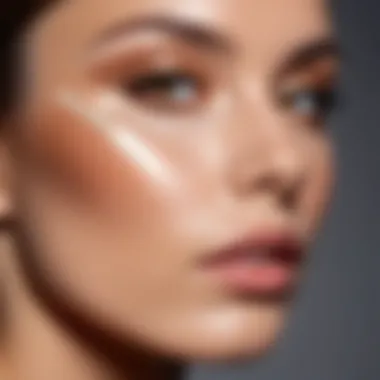

Priming
The final step in the skin-preparation process is priming. A good primer acts as a buffer between your moisturizer and concealer, ensuring even more seamless application. Primers can fill in pores, smooth out skin texture, and even help in controlling oil, making them indispensable, especially for those with textured skin.
When selecting a primer, consider your skin’s specific needs. For instance, if you struggle with redness, look for green-tinted primers designed to neutralize such tones. Likewise, a illuminating primer can add a glow that enhances your overall look.
In summary, preparing your skin isn’t merely a prelude to applying concealer— it's a vital process that can dictate the effectiveness of your makeup. Without this step, you may find yourself wrestling with caking, settling, or uneven application. So, take the time to cleanse, moisturize, and prime. This investment in your skin will pay off in spades.
Application Techniques
The application of concealer is a refined practice that can significantly elevate one's makeup game. Understanding the various techniques for applying concealer not only helps in masking imperfections but also in achieving a polished look. Each method has its own advantages and ideal scenarios, making it essential for individuals to grasp these techniques. The right application can lead to a seamless finish, enhancing overall complexion without drawing unwanted attention to the areas of concern. Knowing how to use the different applicators and their respective techniques can transform a mundane makeup routine into a powerful tool for self-expression and confidence.
Tapping Method
The tapping method is a highly regarded technique among makeup artists for its dexterity in applying concealer. This gentle approach involves using the fingertips to press the product into the skin, allowing it to blend seamlessly with one's natural complexion. The primary benefit of this technique is its capacity to provide a natural finish. Since the warmth of the fingers helps to melt the concealer into the skin, it often results in a more cohesive look. This method works exceptionally well for areas like under the eyes, which require a delicate touch due to the sensitive skin.
- How to do it:
- Start with a small amount of concealer on your fingertip.
- Gently dab the product on the imperfection—dark circles, fine lines or blemishes—using a light touch.
- Keep tapping until the concealer is blended, creating a smooth surface.
It's important to avoid rubbing or dragging the skin, especially in the under-eye area, as this can lead to further irritation or creasing.
Brushing Technique
Using a brush to apply concealer is another method that many prefer, particularly for larger areas or more defined coverage. A good concealer brush can provide precise application and the versatility to adjust the amount of product used. This technique offers control, making it easier to build coverage without the risk of overwhelming one section of the face. For those who prefer a more artistic approach, brushes provide the flexibility to create dimension, especially when blending concealer for contouring.
- Steps to follow:
- Select a flat or pointed concealer brush.
- Apply a small amount of concealer to the brush.
- Press the brush onto the skin, then use short, precise strokes to blend.
- Layer product as necessary to achieve desired coverage.
The potential for streaks can elevate with brushes, so playing around to find the right pressure is essential. Moreover, keeping the brush clean ensures that application remains smooth and free from bacteria, which is key for maintaining skin health.
Using a Sponge
Sponges have grown in popularity throughout the years and for good reason. They offer a unique texture that can create a flawless finish when applying concealer. The damp sponge method is particularly effective, as it aids in blending the product into the skin in a way that mimics a skin-like appearance. By using a bouncing motion with a damp sponge, users can apply concealer over larger areas or targeted spots without leaving lines or patches behind.
- Steps for sponge application:
- Dampen the sponge with water and squeeze out the excess.
- Take a small amount of concealer and dab it onto the sponge.
- Bounce the sponge onto the skin, lightly pressing the product in.
- Repeat until the product is evenly distributed and blended.
The advantage of this method is that it provides a sheer finish that can be built up. Additionally, it’s quite user-friendly for makeup newbies, as it offers a more forgiving application than brushes. > "Always remember, the sponge should be damp—not drenched— for an optimal blend."
Layering Concealer
Layering concealer is an essential technique that can significantly elevate the effectiveness of any makeup application. This approach allows individuals to achieve a more refined look by carefully building coverage in areas that need extra attention. Whether dealing with dark circles under the eyes or specific blemishes on the skin, layering opens up a world of possibilities for a flawless finish. It’s about creating a harmonious blend where the imperfections are minimized while maintaining an authentic skin-like appearance.
Initial Layer Application
The first step in layering concealer is applying the initial layer, which serves as the base for subsequent coverage. It's vital to choose the right concealer type, suited to both the skin type and the targeted imperfection. When starting out, use a product that is slightly thicker than your foundation but not overwhelmingly so. This initial layer should be applied sparingly, dabbing it onto the area needing coverage with a finger, sponge, or brush. The goal is to gently tap, allowing the product to settle into the skin rather than merely sitting on its surface.
Remember, a little goes a long way. Applying too much product at first can lead to unwanted heaviness and caking. Taking a cautious approach ensures that the foundation of your makeup remains light and natural. Once applied, observe how the area appears. It’s not uncommon to find that a slight adjustment in the amount can make a world of difference.
Building Coverage
After the initial layer has had a moment to settle, the next step is to build coverage where necessary. This is the part where you can play around with adding as little or as much as needed. If there are still visible imperfections or even a hint of discoloration, it's perfectly okay to add another layer, but do it wisely.
When building coverage:
- Assess the area visually; not all imperfections require the same level of coverage.
- Use a lightweight product for stacking on top rather than applying the same initial amount.
- Keep dabbing gently instead of dragging, which can lead to an uneven finish.
One common pitfall is the urge to go overboard too quickly. Practicing patience and gradually layering will yield much better results—it's all about knowing when to hold back and when to go in for a bit more.
Setting the Concealer
Now that you've masterfully layered on the concealer, the final key step is setting it. Setting your concealer is crucial to ensure it lasts throughout the day and remains as impeccable as when it was first applied.
To set the concealer effectively:
- Choose the right powder: Look for a translucent setting powder to avoid altering the shade of your concealer.
- Application method: Use a small, fluffy brush for pressing the powder onto the concealed area gently.
- Fine-tune the finish: This is where personal preference comes in; some prefer a matte finish, while others may like a dewy look. If you're going for a luminous appearance, a setting spray afterward can seal the deal without compromising the glow.
By following these steps of layering, not only do you enhance your concealer application techniques, but you also ensure that your skin stays looking fresh and polished, defying the tendencies of imperfections to reappear throughout the day.
"Layering concealer is the secret weapon to achieving a smooth, polished look. It's all about building and refining"
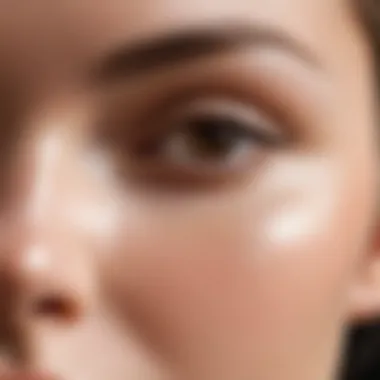
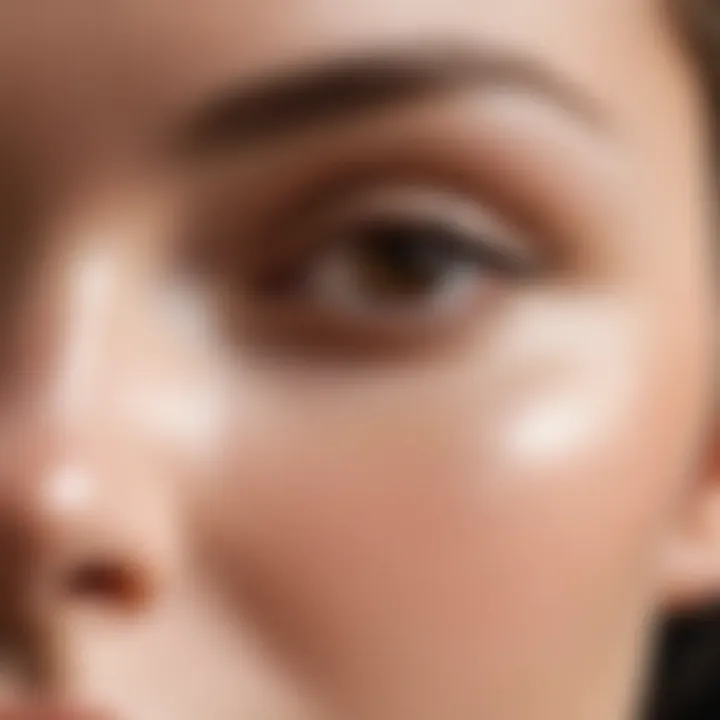
Using Concealer for Contouring
Using concealer for contouring can elevate your makeup game to a whole new level. This technique is essential not just for enhancing one’s appearance but for sculpting the face to achieve an unprecedented definition. It's more than just a beauty trick; it enables individuals to play with their features and create optical illusions that highlight the best aspects of their face.
Defining Facial Features
Contouring with concealer allows you to define facial features by employing lighter and darker shades strategically. For instance, a lighter shade can be applied on the high points of the face such as the cheekbones, the bridge of the nose, and the center of the forehead. This brightening effect draws attention and gives the illusion of a more sculpted face. On the other hand, a darker shade goes along the jawline, under the cheekbones, and the sides of the nose to create depth.
Here’s a quick rundown of the steps to effectively define your facial features with concealer:
- Choose the Right Shades: Select a concealer that is one or two shades lighter and darker than your skin tone.
- Application Technique: Use a brush or your finger to apply the light shade to your desired areas, then follow up with the darker shade in the contouring spots.
- Blending is Key: Take a clean sponge or a makeup brush to blend the edges, ensuring there are no harsh lines left. Transition between shades should feel seamless.
This technique can instantly add dimension to the face, enhancing its natural shape. It's especially beneficial for individuals who wish to lessen the look of prominent features or add an artistic flair.
Creating Shadows and Highlights
Creating shadows and highlights with concealer connects back to our innate desire for symmetry and refinement. The practice of using concealer to shape the face involves not just an aesthetic approach, but it also teaches the arts of depth and light manipulation. For a deeper understanding:
- Shadows: Shadows are achieved by applying the darker concealer in specific areas that you want to recede. This could include the area around your jawline or just below the cheekbones. It’s ideal to keep the shade in the same family as your skin tone to maintain a natural look.
- Highlights: As for highlights, applying lighter concealer on the cheekbones, at the inner corners of the eyes, and along the brow bone brings these areas forward visually. This uplift creates a youthful and radiant look.
When shadows and highlights are balanced correctly, it can dramatically change one’s overall appearance. Yet, bear in mind that the key to effective contouring lies in understanding one’s face shape. So take time to experiment with your applying techniques on different facial structures. Usually, a little practice will go a long way.
"Remember, makeup is an art, so don’t hesitate to express yourself. You might find that contouring with concealer becomes your secret weapon for any occasion."
In summary, using concealer for contouring is a multi-dimensional approach that not only defines features but can also enhance one’s confidence. By grasping how to create shadows and highlights correctly, individuals can achieve a look that is both signature and compelling.
Troubleshooting Common Issues
Concealer application can often feel like walking a tightrope. One moment you’re blending beautifully, and the next, a misstep can leave you with less-than-desired results. Addressing common issues such as caking or oxidation is essential not only for achieving that flawless finish but also for boosting your confidence when sporting makeup. This section delves into key challenges faced by makeup enthusiasts, providing insights and solutions to prevent these hiccups from derailing your look.
Concealer Caking
Concealer caking is one frustrating problem that happens when layers of product do not blend well with the skin, resulting in a thick, patchy appearance. It tends to occur with heavy formulations or when too much product is applied in one area. Why does this happen? Several factors contribute to caking:
- Skin texture: Dry or flaky skin can cause the concealer to settle into fine lines, emphasizing imperfections rather than concealing them.
- Harsh products: Some concealers are formulated with heavy pigments or powders that can cling to the skin unevenly.
- Application technique: Rushing the blending process or using the wrong tool may lead to an uneven finish.
To combat caking, consider the following tips:
- Prep your skin: Always start with a moisturized base. A hydrating primer might be beneficial too. Make sure to gently exfoliate to help minimize dry patches.
- Apply sparingly: Less is often more. Start with a small amount of product and build coverage gradually.
- Blend, blend, blend: Use a damp sponge or your fingertips for a seamless finish. Tapping motions often work better than dragging.
- Set wisely: If you need to set your concealer, choose a fine translucent powder and apply it lightly to avoid adding extra texture.
"Less is often more; even with concealer, small amounts can offer a polished look without the burden of heaviness."
Oxidation Problems
Oxidation issues arise when a concealer darkens after application, leading to an unwelcome shade shift that can throw off your entire makeup look. Several factors can lead to this problem:
- Product formulation: Some ingredients can react with skin oils or moisture, leading to a darker appearance after a few hours.
- Environmental exposure: Humidity and heat may speed up this reaction, making it crucial to consider the climate when choosing products.
- Skin type: Oily skin types are more prone to oxidation due to the increased natural oils that can affect how makeup wears throughout the day.
To prevent oxidation, here are some strategies:
- Test before use: Always swatch products on your skin and let them sit for a few minutes. This allows you to see if they change color over time.
- Choose the right base: A mattifying primer can help create a barrier that minimizes the likelihood of oxidation.
- Lock it in: Setting sprays or powders that are designed to control shine may also help keep your concealer true to color.
- Consider alternatives: If a concealer consistently oxidizes on your skin, look for brands that are designed specifically for your skin type.
In summary, understanding how to troubleshoot these common issues can significantly enhance your makeup experience. Techniques to prevent concealer caking and oxidation can vary based on individual skin types and conditions, so don’t hesitate to experiment and find what suits you best.
Visual Examples
Visual examples play an essential role in understanding the application of concealer effectively. They bridge the gap between theory and practice, allowing readers to see the techniques in action. This section is particularly valuable as it emphasizes the stark differences before and after application, demonstrating how the right methods can transform imperfections into a more polished appearance. The power of visual representation lies in its ability to educate without the need for overly complicated language or jargon.
When discussing visual examples, several elements must be considered:
- Clarity: The images should be well-lit and high-quality so that every detail of the application technique can be observed.
- Diversity: It's important to showcase a variety of skin tones, types, and imperfections to ensure that the guide is inclusive. Everyone’s journey with concealer is a bit different, and visuals that reflect this can provide valuable insights.
- Side-by-Side Comparisons: Illustrating clear before and after shots can effectively highlight the transformation, giving readers concrete proof of what can be achieved when using concealer properly.
In this regard, each visual example serves as a tutorial, with each image telling a story of restoration and enhancement.
The End and Final Thoughts
In any makeup routine, understanding and mastering the use of concealers stands as a cornerstone skill that can markedly elevate one's overall appearance. This article has closely examined the myriad techniques for applying concealer, emphasizing the importance of correct application tailored to the individual’s skin type, tone, and specific imperfections. The final thoughts circle back to the notion that concealer is not merely a product but a powerful tool in the art of makeup.
Recap of Techniques
The focal point here continues as a reminder about the techniques that have been shared. Each method has distinct advantages depending on what you are trying to achieve:
- Tapping Method for a seamless blend that feels light on the skin.
- Brushing Technique allows for a more polished finish.
- Using a Sponge creates an airbrush effect when applied correctly.
Again, layering and blending are paramount when building coverage without caking. Missteps can lead to unwanted attention to imperfections, thus understanding skin preparation, including cleansing, moisturizing, and priming, creates an ideal canvas for flawless application.
Encouragement for Practice
Engagement with the techniques discussed is crucial. An artist doesn’t become great overnight; similarly, the practice invites mastery. Each attempt serves to refine your skills, allowing one to better understand their unique skin characteristics and how different products work. It’s advised to take your time and experiment with various methods to see what resonates most with your facial features and personal preferences.
"Remember, it’s all about finding what works best for you. Your face is the canvas, and the techniques are your brushes."







